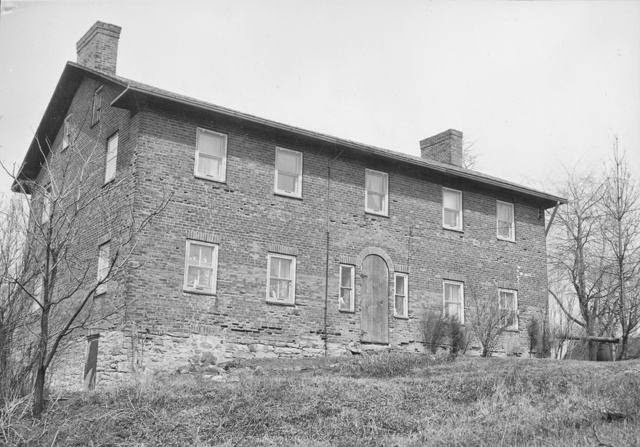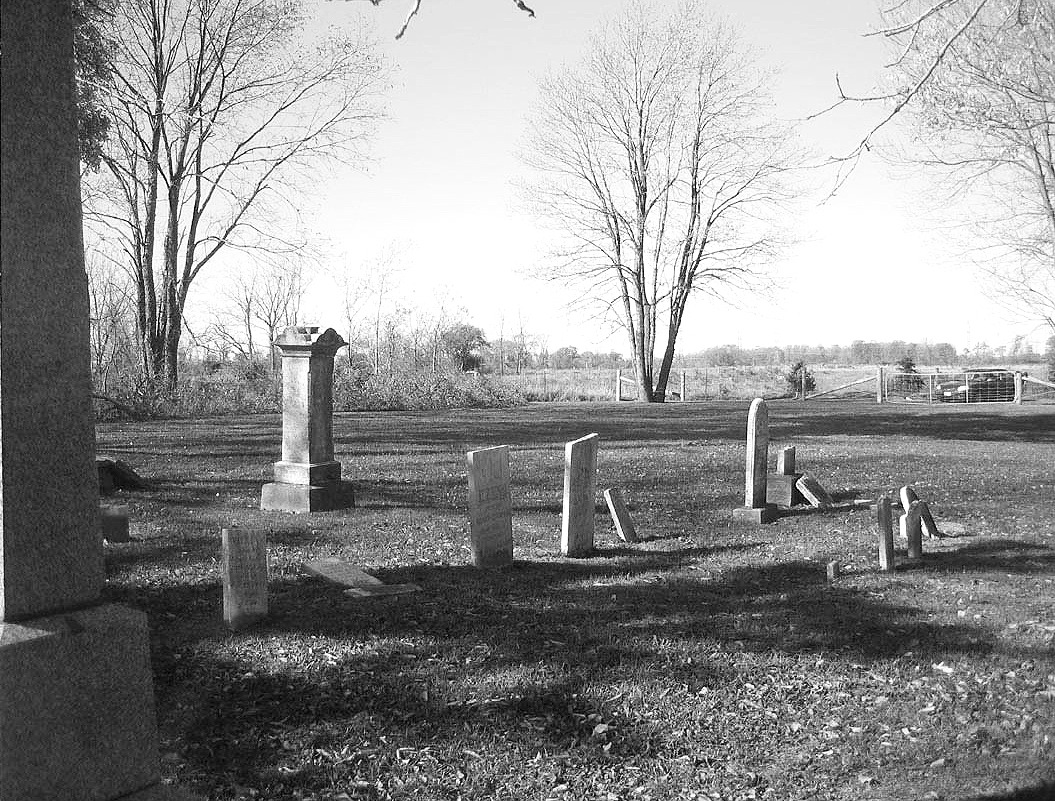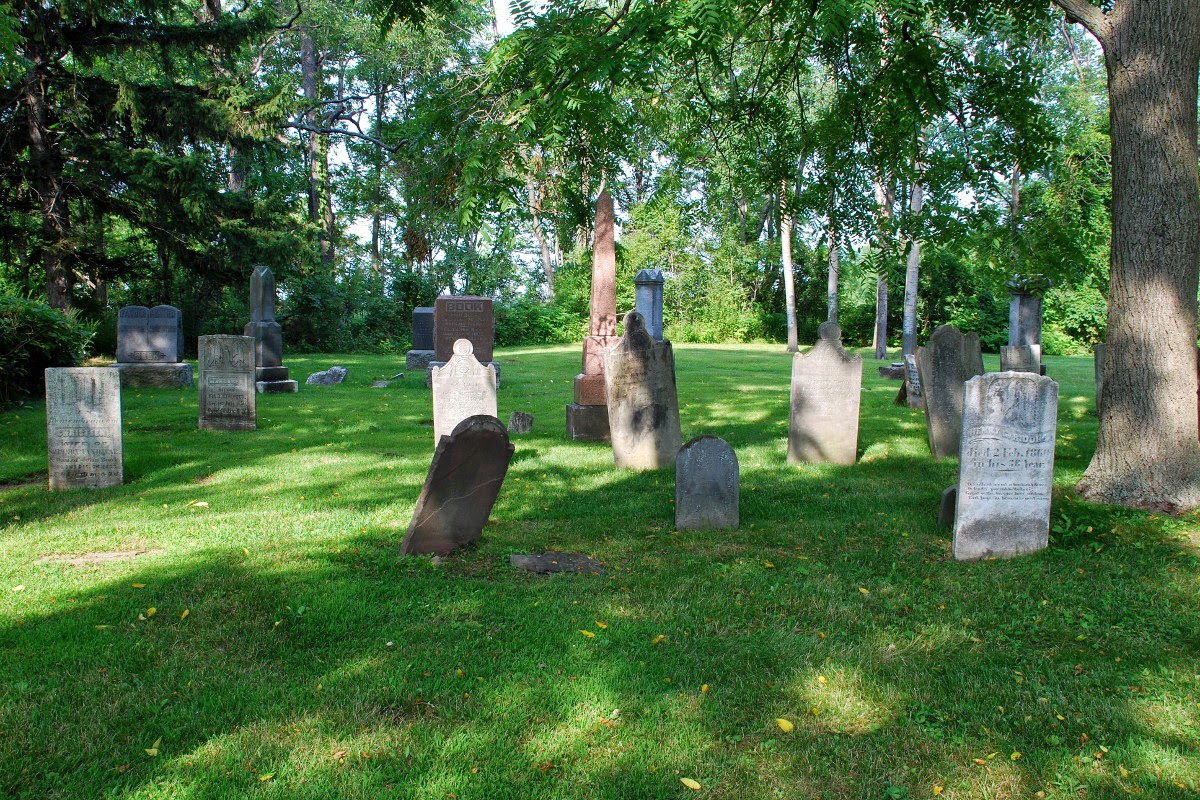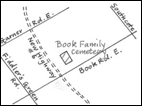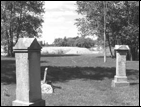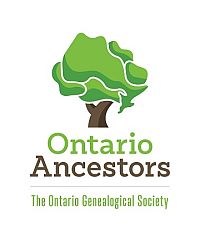Description
CEM 104-Rev_book_family_cemetery
Other Known Names: Book-Parkin Cemetery
Street Address: Book Road East
Location: Lot 45, Concession 4, Ancaster
Type of Cemetery: Family and Municipal
Responsible Agency: City of Hamilton
Status for Burials: Closed for burials Plot Plan: None
Size: Small, 50 monuments
Signage: No Signage
Fencing: Hedgerow with open section Monument Types: Flat, upright and columns Monuments of: Marble and granite
The Book Cemetery, 281 Book Road East, Lot 45, Concession 4, Former Town of Ancaster
Date of Opening: 1815
History:
With recent alterations to roads in the area, the Book Cemetery is now completely hidden from the road and approached only by a steep dirt road overlooking the new Highway #6 By-Pass. John Book squatted on Lot 45, Concession 4, Ancaster Township from 1789 to 1793, before purchasing the property and later registering the Crown Patent. Using the property as a family farm, he established a small cemetery on it in 1815, when the first burial occurred for his son, 20 year old Henry Book.
The Cemetery was used exclusively by the family and related members for several generations, though it is now closed and is currently maintained by the City of Hamilton. Its isolated setting has resulted in the site being vandalized and the grounds being in a state of disrepair.
This cultural heritage assessment examines the heritage attributes of the Book Cemetery (also known as the Book-Parkin Cemetery) located at 281 Book Road East in the former Town of Ancaster. The property includes 85 markers and monuments on a half-acre lot.
The Book Cemetery is one of several old family cemeteries in the Ancaster area of Ontario. Unlike the nearby Shaver Cemetery, time has not been kind to the Book Cemetery. Many monuments are weathered, toppled or broken, and there is evidence that vandalism has been a problem in the past. A number of very old monuments, however, survive in situ, including two from 1815.
The cemetery is located at Lot 45, Concession 4, Ancaster on land that John Book (1754-1827) was granted in 1801. Johannes Buch, later anglicized to John Book was born in Heidelburg, Germany. About 1774 he married Anna Gertraute Zimmerman (1752-1829), who adopted the name Charity when she came to North America. In 1786, the couple and their seven children emigrated to the New Jersey, where their eighth child was born. Two years later they relocated to Canada. By 1789 they were one of 22 families squatting in the Ancaster area. John and Charity eventually had 12 children, nine of whom are buried at Book Cemetery. One of their daughters, Mary Catherine, married William Shaver (1771-1846) and is buried at Shaver Cemetery.
In 1811, John Book began work on a two-and-a-half story red brick house, but construction was interrupted by the War of 1812 when John’s sons George, John and Adam served with the 5th Regiment Lincoln Militia. The Georgian style house, was completed shortly after the war and featured a five-bay symmetrical design with chimneys at the gable ends. The sash windows originally would have been 12-over-12, and the door had sidelights and a half-moon fanlight over the door. The house, surrounding farmland, and cemetery remained in the Book family until 1907. The building was the oldest brick house in Ancaster until it was destroyed by fire in 2005 in a suspected case of arson.
While oldest gravestone in the Book Cemetery is that of Henry Book (1795-1815), tenth child of John and Charity, far more interesting is the red slate gravestone of Mary Book (1759-1815), possibly an unmarried sister of John. John and Charity’s gray slate gravestones are also extant as are their footstones.
Completing a photographic inventory of this cemetery was a challenge. The 1985 Ontario Genealogical transcription is incomplete as at least six gravestones were not listed. It also contains numerous errors, and does not appear to have been completed in any sort of systematic fashion. This made it next to impossible to identify the several unreadable gravestones based on their location. Fortunately an 1890 transcription is also available, as is a cultural heritage assessment report prepared in 2010.
John Book (1754-1827)

